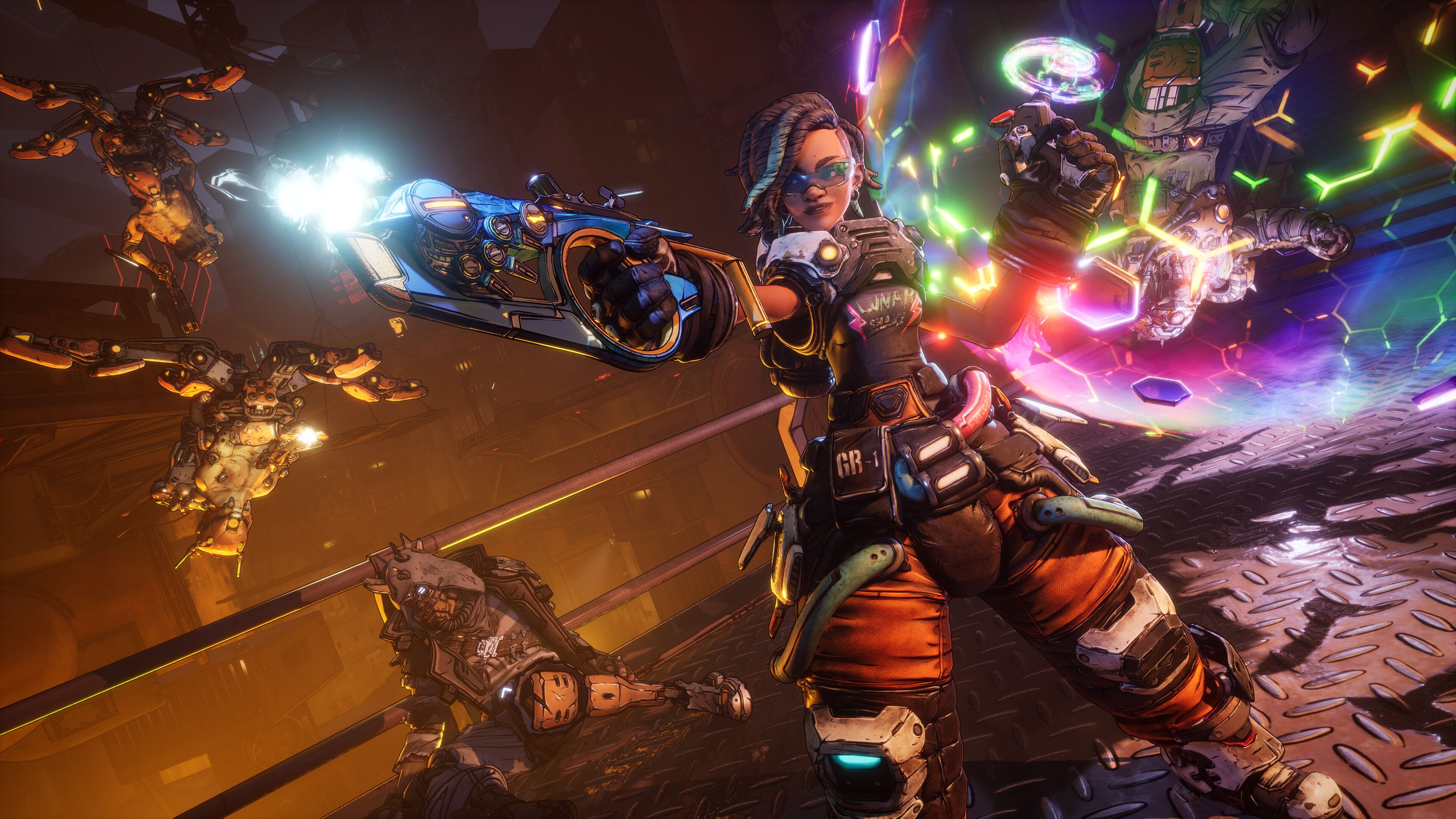
The PC port of Borderlands 4 launched in a rough spot. Frequent frame drops and poor performance make this a difficult game to run on most systems, even PCs with the best hardware available. There will likely be patches that address the current performance woes, but in the meantime, you can tweak some settings to improve your frame rate.
We'll be looking at Borderlands 4's PC settings to make this the best experience possible for most rigs. We cover everything from visual settings to optional gameplay modifiers that make combat a little bit easier. Before we dive into gameplay changes, let's cover some optimal visual settings to improve the game's poor PC performance.
Visual Settings
The images above were taken at 4K resolution with no upscalers enabled.
Shown above is the Launchpad hub town at each graphical preset: low, medium, high, very high, and badass. Low has virtually no foliage and poor LOD quality, so we advise against using this preset unless your computer barely meets the game's minimum system requirements.
However, setting the game past the high preset comes with a significant performance hit. If you want to quickly set up your PC settings, set your preset to medium and use your preferred image upscaler. Our optimized settings below will look slightly better, but this seems to be the sweet spot between image quality and performance for this title.
Basic
Optimized Settings Optimized SettingsBasic
Field of View
Preference
Vehicle Field of View
Preference
The only basic feature we suggest changing is the field of view slider. It is 90 by default, which we find to be a little narrow with all the new movement features added in Borderlands 4. We suggest trying 100 and seeing how that feels. If you need it even wider, try 110.
Advanced
Resolution Scaling
Upscaling Method
DLSS or TSR
Upscaling Quality
Performance or Balanced
Frame Generation
Off unless 1% lows are above 60 FPS
Nvidia Reflex Low Latency
Boost
Environment
HLOD Loading Range
Far
Geometry Quality
Medium
Texture Quality
Low unless you have
Textures Streaming Speed
Very High
Anisotropic Filtering Quality
x8
Foliage Density
High
Volumetric Fog
Low
Volumetric Cloud
Low
Shadow Quality
Medium
Directional Shadow Quality
Medium
Volumetric Cloud Shadows
Disabled
Lighting Quality
Medium
Reflections Quality
Low
Shading Quality
Medium
Post-Processing
Post-Process Quality
Low
Motion Blur Amount
0%
Before you mess with environment settings, you'll want to enable an upscaler if you're playing at 1440p or higher. DLSS is our recommendation if you're using an Nvidia GPU. If not, Epic's built-in TSR is a decent alternative. For the upscaling quality, we suggest you run Balanced first. If your frame rate is a little too low, drop it to Performance.
For users with RTX 40 series GPUs or higher, frame generation is a viable option if you're achieving a consistent 60 FPS or higher. If frame dips are under that, frame generation will negatively affect your input latency.
As for the environment settings, we've found that Foliage Density and HLOD Loading Range have the largest impacts on visual quality. We recommend setting both to High. Geometry Quality is best left at Medium unless you have a strong PC. Texture Quality is dependent on how much VRAM your GPU has. If you have 8GB or less, we'd stick to Low or Medium. Those with VRAM to spare can bump up their texture quality with a minimal performance hit.
Textures Streaming Speed seems to be influenced by how fast your storage device is. If your game is installed on an SSD, set this to Very High. Those playing on optical drives should stick to lower settings.
Beyond that, we're mostly using the Medium preset for our settings here. Volumetric settings and Reflections should all be set to Low to minimize frame drops in combat. Everything else should be set to Medium, although feel free to adjust these settings lower if you need more FPS. Post-processing effects are mostly down to preference. We suggest disabling Motion Blur entirely and lowering your Post-Process Quality. While it doesn't impact performance, it disables effects like depth of field and film grain.
Controls
General
Look Sensitivity
Preference
Aiming
Mouse ADS Snap to Target
Preference
There are two settings in the basics tab you'll want to check: Look Sensitivity and Mouse ADS Snap to Target. The base mouse sensitivity in Borderlands 4 is absurdly high, so you'll want to tone it down in the options. We suggest lowering the base sensitivity and making an even lower ADS sensitivity value. This should make aiming feel much smoother.
If you love using precision weapons but struggle to land headshots, you might want to consider the Snap to Target setting. This gives M&K the same aim assist as controller, causing your reticle to instantly snap to a target's weakpoint whenever you aim. It's especially useful if you use Jakobs firearms.
You can also rebind your keys in this menu. We don't have any specific keybind recommendations since everyone's setup is different. With that said, we suggest you place your Repkit, Grapple, and ability keybinds in a comfortable position.
Gameplay
HUD
Toggle Radar Display
Radar
Borderlands 4 lacks a proper minimap, opting instead for a compass that displays enemy positions in your field of view. It's not quite as useful as the minimap from previous games. While you can't add a minimap directly, you can toggle a radar display that shows enemies on a top-down HUD element.
Accessibility Settings
Gameplay
Screen Shake Intensity
25% or lower
Camera Head-bob
25% or lower
Grapple View Tilt
Off
Mantle with Forward
On
The accessibility tab has some gameplay settings you'll want to adjust. We highly recommend you lower your Screen Shake Intensity and Camera Head-bob settings to 25% or lower. You can turn them off entirely if you'd prefer, but a value of roughly 25% gives solid feedback without disorienting you.
Grapple View Tilt should be set to off. This setting forces your character to look at the grapple point whenever you use your grappling hook. It's incredibly disorienting and makes the grappling hook a nightmare to use in combat until you turn it off. If you struggle to mantle on objects, you can also enable Mantle with Forward to automatically mantle onto surfaces by running into them.













